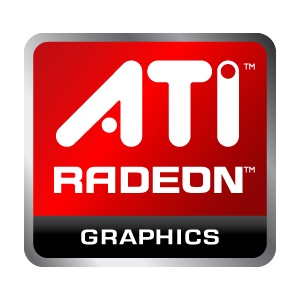If you’re an owner of an ATI GPU, Ubuntu comes with a default driver for most (particularly the newer range of products). However, this out of the box driver lacks many  features that the standard flgrx driver package is capable of providing.
features that the standard flgrx driver package is capable of providing.
This driver is not included by default and to enable the advanced computing functions that your GPU supports, it has to be installed.
To begin, we need to check whether our GPU is supported by the driver. To do so, head to http://support.amd.com/us/gpudownload/Pages/index.aspx
If your system architecture is 64bit (x86_64), you need the ia32-libs package as well.
sudo apt-get install ia32-libs
Afterwards, we need to download the latest Catalyst release package from AMD.
wget http://www2.ati.com/drivers/linux/ati-driver-installer-11-3-x86.x86_64.run
Note: At the time of writing, 11.3 was the latest version available. You’re free to switch this number to otherwise to acquire newer releases.
It is a necessity to ensure that older radeon drivers and their config files are not left behind. Even if you are sure that you got rid of them, performing the following command is recommended:
sudo apt-get remove --purge xserver-xorg-video-radeon
Now we need to build out .deb pakage. This can be done with the following command.
sh ati-driver-installer-11-3-x86.x86_64.run --buildpkg Ubuntu/maverick
The Ubuntu/maverick part is your distro identifier and needs to be changed according to your own distro.
After that’s done, all that’s left is simply installing your .deb package.
sudo dpkg -i fglrx*.deb
You might need to generate a newer version of your Xorg config file. There is no automated way of doing this, sadly. To begin, generate it with:
sudo aticonfig --initial -f
A very minimal config for an owner of the 5850 Radeon HD chip may be as follows:
Section “Device”
Identifier “ATI radeon 5850”
Driver “fglrx”
EndSection
– If you own a dual gpu card, add the –adapter=all option to aticonfig.
sudo aticonfig --initial -f --adapter=all
– If you own a dual monitor setup, you need to use the commands below instead.
sudo aticonfig --initial -f
sudo aticonfig --set-pcs-str="DDX,EnableRandR12,FALSE"
After all that’s done, all that’s left is forcing the use of your new config.
sudo aticonfig --input=/etc/X11/xorg.conf --tls=1
Afterwards reboot your computer. Then input the command below to check out that everything is running as they should.
fglrxinfo
A typical output should look like this:
display: :0.0 screen: 0
OpenGL vendor string: ATI Technologies Inc.
OpenGL renderer string: ATI Radeon HD 5800 Series (This line may be different depending on what graphics card you are using.)
OpenGL version string: 3.3.9901 Compatibility Profile Context (This line may be different depending on what graphics card and
Catalyst version you are using.)
Now, let’s try testing our gears settings.
fgl_glxgears
If it hangs there, you need to disable your tls settings. This can be done with the following:
sudo aticonfig --tls=0
A tip:
Just in case if your desktop goes totally black thanks to some glitch, press this key combination.
Alt+PrntScr+r, Alt+PrntScr+s, Alt+PrntScr+e, Alt+PrntScr+i, Alt+PrntScr+n, Alt+PrntScr+u, Alt+PrntScr+b
It’s advised to write it down because you can’t really check anything if your screen does decide to go blank on you.
Well, that’s all there’s to it. Enjoy your new 3D accelerated setup.
Thanks again to Convexity for this post




